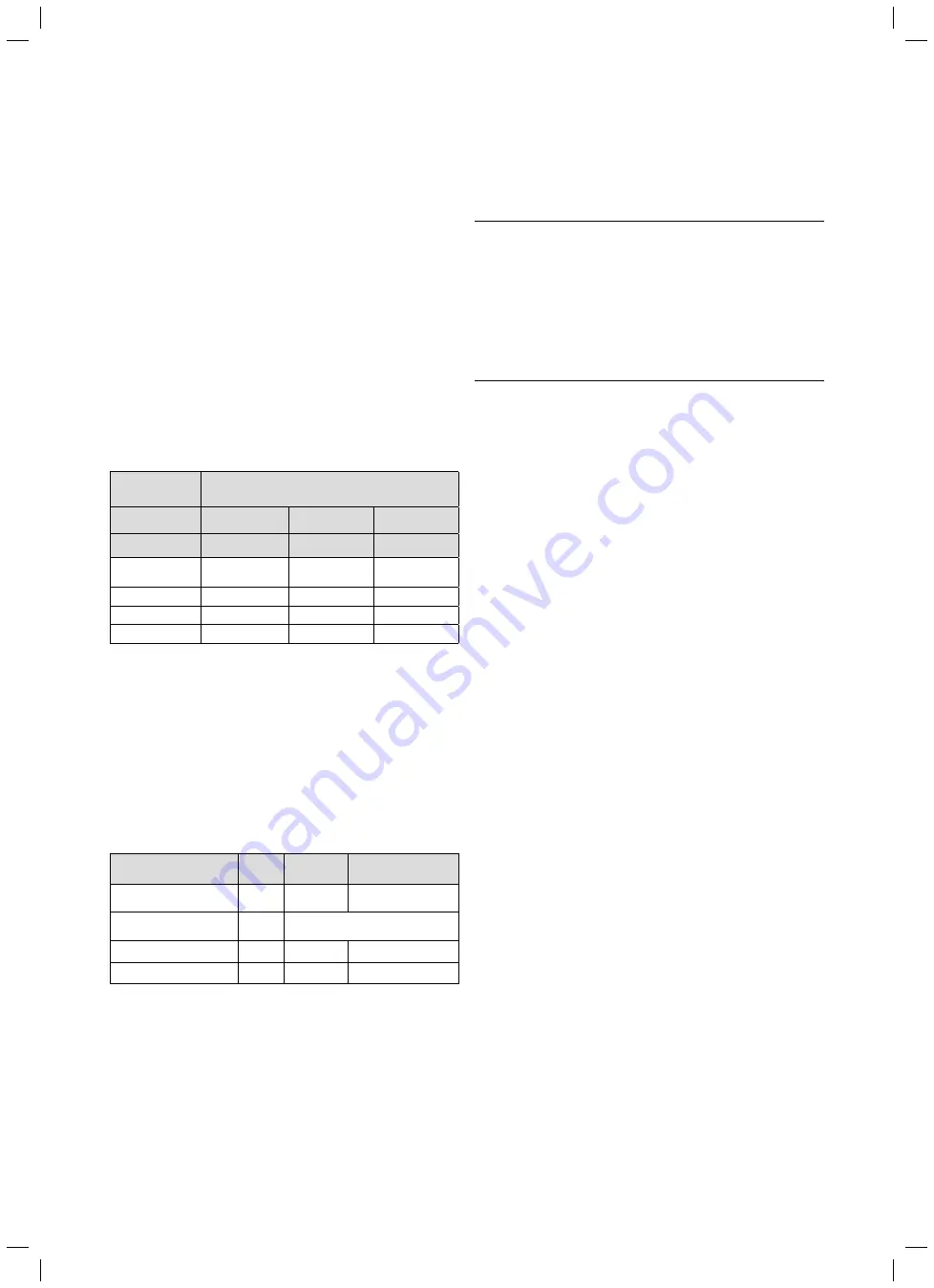
56
Instructions on commissioning, maintenance, and troubleshooting for auroSTOR 0020111119_02
>
Inform the operator of the necessary measures if you
have used these additives.
>
Inform the operator about the required measures for
frost protection.
>
Observe all valid national and technical regulations when
treating the filling and supplementary water.
Provided the national regulations and technical stand-
ards do not stipulate more stringent requirements, the
following applies:
>
You must treat the heating water in the following cases:
– If the entire filling and supplementary water quantity
during the operating life of the system exceeds three
times the nominal volume of the heating system
or
– If the limit values shown in the tables are not obser-
ved.
Total heating
output
Overall hardness at smallest boiler heating
surface
2)
20 l/kW
> 20 l/kW
< 50 l/kW
> 50 l/kW
kW
mol/m
3
mol/m
3
mol/m
3
<
50
No requirement
or < 3
1)
2
0,02
>
50 to
£
200
2
1,5
0,02
>
200 to
£
600
1,5
0,02
0,02
>
600
0,02
0,02
0,02
1) For systems with circulation water heaters and for systems
with electric heating elements
2) Of specific system volume (nominal content in litres/heating
output; in the case of multi-boiler systems, the smallest single
heating output is to be used).
These values only apply up to 3 times the system volume for
filling and supplementary water. Once this triple system vol-
ume is exceeded, the water will have to be treated exactly the
same as in case of exceeding the limit values given in this table
(softening, desalination, hardness stabilisation and desludging).
Table 7.3 Guidelines for the heating water: Water hardness
Heating water charac-
teristics
Unit
Low-salt
Saline
Electrical conductivity
at 25 ºC
m
S/cm
< 100
100 - 1500
Appearance
Free from sedimentary materials
pH value at 25 ºC
8,2 - 10,0
8,2 - 10,0
Oxygen
mg/l
< 0.1
< 0.02
Table 7.4 Guidelines for the heating water: Salt content
7.7
Filling the cylinder
b
Caution!
Risk of material damage due to unsuita-
ble water!
Unsuitable water can lead to deposits and
corrosion damage in the cylinder and in the
hot water circuit.
>
Use only potable water with a chloride
content of below 250 mg/l in the hot
water circuit.
i
Use the draw-off points to vent the cylinder and
water pipes. Do not use the combined tempera-
ture/pressure relief valve of the cylinder or the
pressure relief valve of the cold water safety
assembly for venting, since foreign bodies can
contaminate or damage the valves.
>
Make sure that the drain valve is closed.
>
Open all of the draw-off points in the cold and hot water
pipes.
>
Open the water supply inlet to the cylinder and allow the
water to run until bubble-free water runs from all of the
draw-off points and the air is removed from the system.
>
Close all of the draw-off points.
>
Check the system for leaks.
In particular, check the installed electric immersion hea-
ter for leaks.
>
Open two hot water draw-off points, one at the lowest
point and one at the highest point of the pipe system,
and allow water to run for at least 5 minutes.
>
Close both of the hot water draw-off points.
7 Commissioning
















































